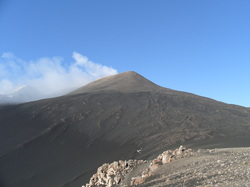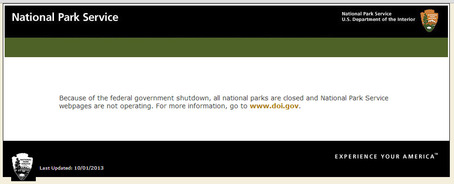 The plume of the NEC in September 2012. The plume of the NEC in September 2012. Recent research published in Geophysical Research Letters by Tamburello et al. (2013) has demonstrated that Sulphur Dioxide emissions can vary rapidly over very short timescales during passive degassing (see previous post for info on passive degassing). The study also demonstrates that there are links between the emission of Sulphur Dioxide and Seismicity over certain periods. This is achieved by taking high resolution readings of Sulphur Dioxide using UV cameras every second or so, which allows the comparison of the Sulphur Dioxide and Seimsic datasets at this high resolution. Great! But what does this mean? In short it means that the two process are potentially linked over these timescales, which could implicate that gas emissions are driving seismicity (I am sure there are other possibilities though...). It confirms that volcanoes such as Etna are very dynamic and that sub-surface processes (which almost inevitably cause these fluctuations) rapidly alter the gas emissions that are recorded at the surface (or vice-versa). This is where my PhD research kicks in, why are we seeing these changes over these timescales? What is causing these very periodic structures? Of course this trend in emissions is not just seen at Etna but at other volcanoes worldwide. It could therefore be important for understanding the state of shallow magma pathways and storage areas in basaltic systems generally. The US government shutdown a few days ago and it has already begun to have a severe impact on people's lives and potentially the stability of the US economy if it continues much longer. This is not a political blog (although I am interested in such things sometimes) so I thought I would take a brief look at how it will effect volcanology. First things first, potentially one of the most obvious effects, the Smithsonian institution is closed which means no more volcanic updates. This also includes the weekly volcanic update which I am sure most agree is an invaluable source of reliable information on present eruptions, something which will not occur until this shutdown ends.  What about national parks? Log on to the National Park Service website and the message on the right appears - all national parks are closed, this includes valuable tourist destinations such as Yellowstone National Park (to my knowledge anyway!). The wonderful natural attractions which support so many jobs and attract many tourists will not be able to be visited. I am certainly glad that I got my visit in earlier in the summer! It is not also the national parks which are affected but the Volcanic Observatory's as well. The following is taken from the USGS Hawaiian Volcano Observatory website: The U.S. Volcano Observatories will remain operational during the lapse of federal government appropriations. Basic volcano monitoring will continue, as will forecasts and regular updates of volcanic activity. However, because of reduced staff, instrument network maintenance will cease, meaning that our monitoring capability will degrade over time. This website will remain functional, but only those pages containing information about current volcano hazards will be maintained. Reading between the lines, what does this statement mean? Well first things first, volcano monitoring will continue so air traffic updates will continue keeping aircraft safe and people in case of an event or a change in hazard status (no need to worry on that point then!). An increased workload for employees will likely however be an undesired effect. Volcanic monitoring instruments often need frequent calibration, checking or repair to keep them sending reliable information to observatory's, as such the shorter the shutdown the better. However, the longer it continues the number of instruments in operation will decline but also the reliability of the data which will not only be bad for science (i.e. less science will be done with a reduction in instruments and quality of data) but bad for volcano monitoring. Of course after the shutdown ends, whenever that might be, it will take longer to repair or check equipment and generally get up and running again. I certainly detect a bitter undertone in the statement directed at the US government as it will likely create a large backlog of work.
Here's to hoping the shutdown ends soon for more reasons than just volcanological! |
Archives
July 2023
|

 RSS Feed
RSS Feed